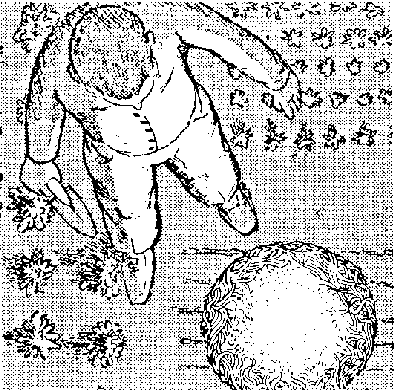 |
Science Frontiers ONLINE No. 33: May-Jun 1984 |
|
|
Wormy Ball Lightning
1920. Parkside, Australia. A loud noise was heard several hundred yards away.
"It wasn't long till we heard a hissing noise and, looking up to the western sky, saw an object about 12 inches in diameter slowly moving through the air down toward us -- about 12 feet away. It was travelling eastward and came down over Mrs. Harris's wooden fence landing on the cement porch floor about 3 feet behind us. It gracefully bounced along the cement floor in a straight path covering the 30 foot length of the verandah at a walking pace. It bounced three or four times rising to a height of 18 inches on each occasion. Each time the spherical ball touched the cement it was flattened at the point of contact, and deformed, but it quickly resumed its globular shape when it left the ground. It was not transparent but, rather, like a ball of smoke with glowing 'comma-shaped' electrical 'worms' wriggling about -- sizzling, hissing and flickering. It flattened by 1/4 into the egg shape on each bounce. On reaching the far western end of our verandah it accelerated rapidly and rose at a steep angle of about 45 degrees clearing the apricot tree, wires, and the house next door. At this stage my mother rushed in the back door of the house where we huddled for about 30 seconds before hearing a resounding crash some 250 yards away off to the east. It had hit Green's house at the far eastern end of Campbell Road. It apparently then bounced all the way to the Salvation Army home and demolished the whole house somewhere near Dawson and Florence Streets at Fullarton."
The ball rotated slowly and emitted small sparks.
(Illert, Theodore Charles; "The Parkside Lightning Ball," personal communication from C. Illert. To be published in "Speak No Evil: A Case Study of Lives and Times of German Settlers in South Australia," by C. Illert)
 | Ball lightning with a wormy or rope-like surface structure. The example sketched above appeared in an English garden, but it is basically the same as the Parkside ball lightning. (See the Catalog of Anomalies) |